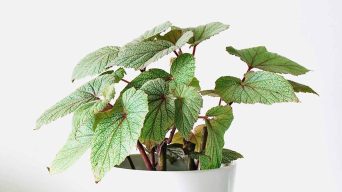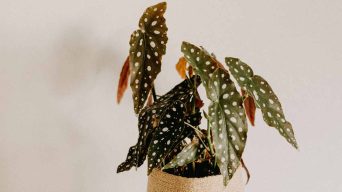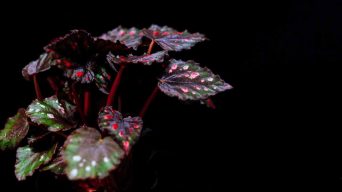Yellow leaves on Begonias are caused by overwatering, allowing the soil to stay soggy, or letting the plant sit in water. This can be fixed by watering only when the soil is dry. Other causes of yellowing leaves may include fungal problems, pests, and bacterial or viral diseases. Proper watering is essential for Begonia’s health.
Begonia plants are popular among plant enthusiasts and are known for their striking foliage and beautiful blooms.
However, it’s common to find your Begonia leaves turning yellow, leaving you puzzled about the cause.
Here we’ll explore the common reasons behind this issue and provide practical solutions to restore your Begonia’s vibrant colors.
Common Causes Of Yellowing Begonia Leaves
Yellowing of Begonia leaves is a common problem among gardeners, and various factors can cause it.
Overwatering or underwatering, lack of sunlight, nutrient deficiencies, pest infestations, or diseases are some of the most common causes.
Identifying the root cause of yellowing leaves is crucial to take the proper corrective measures and prevent further plant damage.
Overwatering Or Underwatering
Overwatering and underwatering are common causes for Begonia leaves turning yellow, as these lively plants can be sensitive to moisture level fluctuations.
Striking the right balance in your watering habits is essential for maintaining thriving, beautiful foliage.
For instance, detecting a soft or pulpy consistency in the leaves with visible signs of deterioration around the plant’s lower region could suggest an excess of water.
In contrast, when Begonias are underwatered, their leaves may develop brown tips or edges before gradually turning yellow.
Insufficient Sunlight
Insufficient sunlight is a common culprit behind Begonia leaves turning yellow.
These vibrant and beautiful plants, including popular varieties such as Angel Wing Begonia and Polka Dot Begonia, require bright indirect light to thrive.
When they don’t receive the appropriate amount of sunlight exposure, their leaves might develop a yellow hue – which usually indicates that the plant isn’t producing enough chlorophyll through photosynthesis.
Finding the perfect balance of sunlight for your Begonia is essential since too much direct sun could cause brown leaf tips or even scorching.
On the other hand, insufficient light can lead to poor growth and discoloration in your beloved plant or spotted Begonia.
Nutrient Deficiencies
Nutrient deficiencies can significantly contribute to Begonia leaves turning yellow.
A lack of essential nutrients, such as nitrogen, iron, and magnesium, may cause the leaves to lose their vibrant green color and eventually turn yellow.
For instance, nitrogen deficiency often leads to chlorosis – a condition in which the plant cannot produce enough chlorophyll due to insufficient nutrient supply.
As a result, your beloved Angel Wing or Polka Dot Begonia might start displaying an unhealthy appearance.
Several factors can lead to nutrient deficiencies in begonias plants, like overwatering or poor drainage, affecting the availability of crucial elements needed for healthy growth.
Pest Infestations
Pests can be a significant cause of yellowing begonia leaves.
Common pests that can infest your begonias include mites and aphids, which feed on the sap in the leaves, resulting in discoloration and distortion.
Another pest that can cause yellowing begonia leaves is thrips, tiny insects that feed on young plant tissues.
An easy way to identify a thrip infestation is by looking for brown streaks or silver spots on the leaves.
Diseases
Diseases are another common factor that can cause Begonia leaves to turn yellow.
Begonias are susceptible to various fungal and bacterial diseases, such as powdery mildew and leaf spot.
Powdery mildew presents as a white, powdery coating on the leaves, while leaf spot appears as brown or black spots on the leaves. These diseases can weaken the plant and cause it to drop its leaves prematurely.
Effective Solutions For Yellowing Begonia Leaves
If you’re struggling with yellowing Begonia leaves, don’t worry!
There are practical solutions to help you restore their beauty.
Adjust your watering habits, provide bright indirect light, and add necessary nutrients with a balanced fertilizer.
Promptly address pest infestations using organic methods or insecticides and treat diseases immediately with proper hygiene practices or fungicide treatments.
These steps will help keep your Begonias healthy and beautiful.
Adjusting Watering Habits
Adjusting watering habits is one of the most effective solutions for yellowing Begonia leaves. Here are some tips to follow:
- Check the soil moisture regularly by sticking your finger about an inch deep into the soil. Water only when the top inch of soil is dry.
- Water thoroughly, but ensure excess water drains out from the bottom of the pot to avoid soggy soil, which can lead to root rot and yellowing leaves.
- Adjust watering frequency according to the time of year and growing season, as plants need more water during warmer months and less during cooler months.
- Use a potting mix that drains well and allows air to circulate around the roots.
- Avoid overhead watering, which can cause leaf spots and diseases, especially during high humidity periods.
Properly regulating watering habits can prevent yellowing Begonia leaves caused by overwatering or underwatering and keep your plant healthy and thriving.
Providing Adequate Sunlight
To prevent the yellowing of your Begonia leaves, it’s important to provide them with adequate sunlight.
Here are some tips on how to do so:
- Place your plant in a spot that gets bright, indirect light.
- Avoid placing your plant in direct sunlight, as this can cause the burning of the leaves.
- Consider using fluorescent or LED grow lights if natural light is not enough.
- Rotate your plant every few weeks to ensure all sides receive equal sunlight exposure.
- Keep an eye on the color and texture of the leaves, adjusting its position accordingly.
Adding Needed Nutrients
When the leaves of your Begonia start turning yellow, it may be a sign of a lack of nutrients.
Proper nutrition is essential for healthy and vibrant foliage.
Here are some necessary nutrients to add to your plant’s soil:
- Nitrogen – This essential nutrient helps with leaf development and overall growth. Use a nitrogen-rich fertilizer during the growing season.
- Manganese – A lack of manganese can cause yellowing between the veins of leaves. Incorporating manganese into the soil will help prevent this issue.
- Zinc – Zinc is crucial for proper plant growth and chlorophyll production. Add zinc-rich fertilizers or organic matter such as compost or manure to your Begonia soil mix.
Adding these vital nutrients will help give your Begonia what it needs to flourish and maintain its healthy green coloration.
Be sure not to overfertilize, as this can also cause damage to your plant. Follow the recommended dosage on the label carefully, and always water thoroughly after applying fertilizer.
Addressing Pest Infestations
Pest infestations can cause yellowing leaves in Begonia plants.
Here are some practical ways to address this problem:
- Identify the type of pest: Different pests require different treatment methods. Common pests that affect Begonias include spider mites, mealybugs, and thrips.
- Use insecticidal soap or neem oil: These natural remedies can help control pests on your begonia plant without harming it. Follow the instructions on the label carefully.
- Isolate infected plants: If you have multiple Begonia plants and one is infected with pests, isolate it to prevent further spread to other healthy plants.
- Keep the plant clean: Regularly clean dust and debris from leaves to prevent pest infestations.
- Monitor regularly: Inspect your Begonia plant for signs of pest infestation, such as webbing, sticky residue, or leaf damage. Early detection ensures proper action can be taken quickly to prevent further damage.
Prevention is always key regarding pest control in your Begonia plants.
Keeping your plant clean and healthy will go a long way in preventing pest infestations in the first place.
Treating Diseases
Early detection and treatment are essential when it comes to diseases that cause yellowing Begonia leaves.
Here are some effective solutions for treating diseases in your Begonia plant:
- Remove infected leaves: If you notice any yellow or brown spots on your Begonia leaves, cut them off immediately to prevent the disease from spreading to healthy leaves.
- Increase air circulation: Poor air circulation can contribute to the growth of fungal diseases like powdery mildew or leaf spot. Move your plant to a location with better airflow, or use a fan.
- Improve hygiene: Regularly clean your plant’s leaves with a damp cloth or mist them with water to reduce the risk of fungal infections.
- Use fungicides: If the infection has spread too far for manual removal, consider using a fungicide designed explicitly for treating Begonias.
- Quarantine infected plants: If one of your Begonias is infected with a disease, separate it from other plants until the issue has been resolved to prevent further contamination.
Taking proactive steps to maintain plant health will ensure your Begonias stay vibrant and healthy for years to come!
Final Thoughts
Yellowing begonia leaves are a common issue for plant enthusiasts.
The causes can range from improper watering and lighting to pest infestations and diseases.
However, practical solutions to help maintain healthy Begonia plants include:
- Adjusting watering habits.
- Providing adequate sunlight and nutrients.
- Addressing pests and diseases promptly.
- Maintaining proper air circulation.
By carefully monitoring the plant’s care, you can keep your Begonias looking lush and beautiful year round.
Don’t let yellowing leaves get in the way of enjoying these unique and stunning plants – take action now to keep them thriving!







